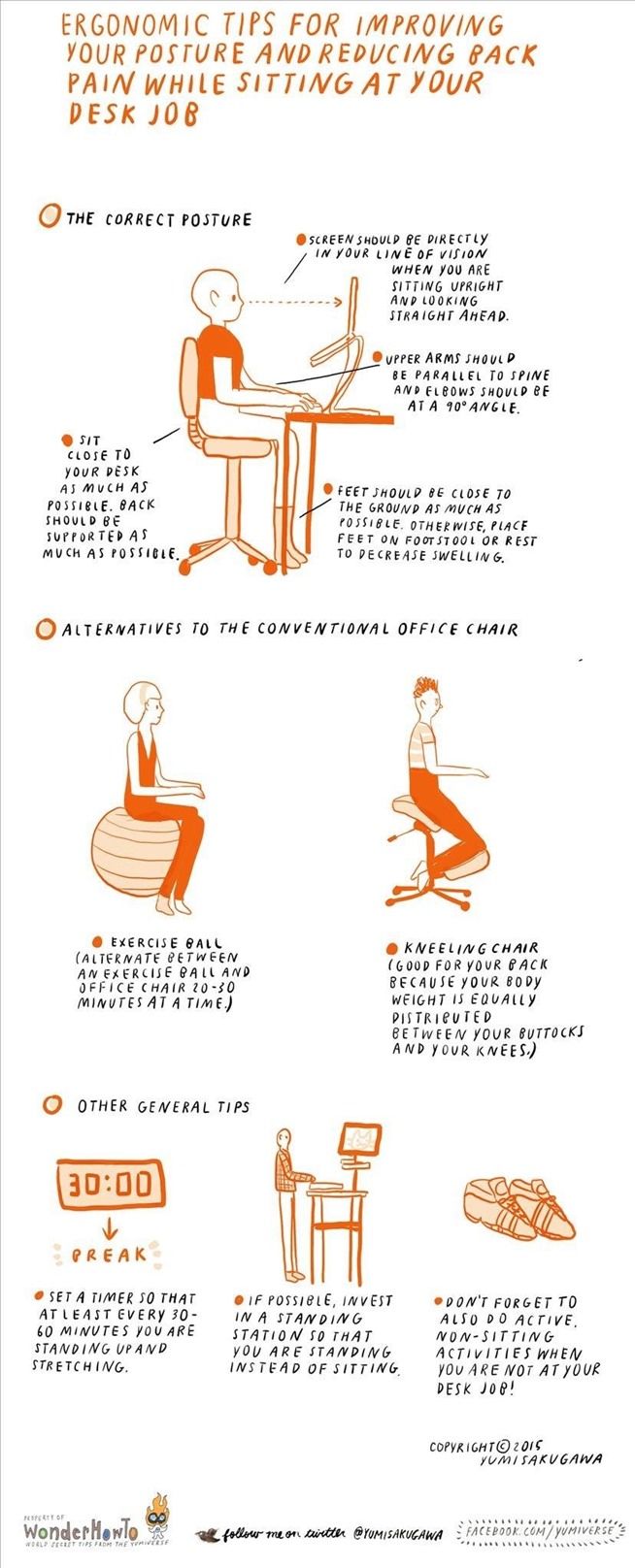Posture While Sitting At Desk

Sitting at a desk 8 or more hours a day takes a toll on your body.
Posture while sitting at desk. Breed suggests keeping your feet flat on the floor and hip width apart when you sit and avoid crossing the knees or ankles for better alignment. But here s the posture you should be aiming for if you re like the majority of us and spend your days sitting at your desk. Practicing better posture while at your desk at work or at home even in the smallest ways is a great way to be mindful of your health on a daily basis and there are a few quick ways you can improve your posture as you go along your workday. Your lower legs should form a 90 degree angle at the knees.
Good posture involves training your body to stand walk sit and lie so as to place the least strain on muscles and ligaments while you are moving or performing weight bearing activities. Switch up your seating. Sitting at your desk doesn t have to be a pain in the neck. Keep your pelvis neutral with your buttocks against the back of your chair.
Your upper legs should be flat against the bottom of the chair. Sit using ideal posture. Standing or treadmill desks would be ideal. To relieve and minimize pain follow these basic posture pointers.
Posture is the position in which you hold your body while standing sitting or lying down. To alleviate this discomfort redesign your workspace to encourage well aligned posture. Plus tips for how to upgrade your work from home set up. Essentially your desk job causes bad posture.
Proper sitting posture at a desk begins at your pelvis. Since the type of chair that you use will vary try to keep the following criteria in mind. You want to sit with your pelvis in a neutral position with your buttocks against the back of the chair. If you sit behind a desk for hours at a time you re not doomed to a career of neck and back pain or sore wrists and fingers.
Give your posture some attention and work smarter not harder at your desk. Tips for better posture while sitting at a desk. Working at a desk is a common cause of back and neck pain. Proper office ergonomics including correct chair height adequate equipment spacing and good desk posture can help you and your joints stay comfortable at work.
Many office and personal desk chairs have adjustable backs seats and even lumbar support.














































